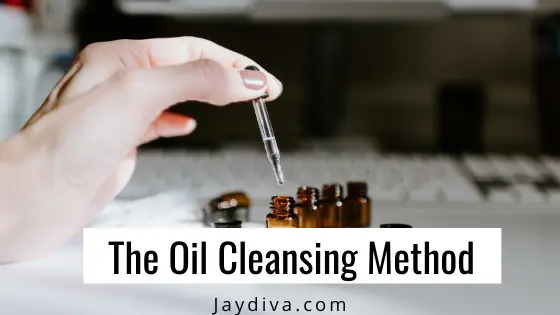Are you curious about the buzz around oil cleansing? Perhaps you’re searching for a skincare routine that’s both effective and gentle on your skin. You’ve come to the right place! Oil cleansing might seem counterintuitive at first—using oil to clean your face? Really?—but it’s a beautifully simple and deeply nourishing practice that could transform the way you think about skincare.
This blog post is designed to guide you through the basics of oil cleansing. We’ll demystify the process, discuss its myriad benefits, and walk you through step-by-step instructions to integrate it into your daily regimen. Whether you have dry, oily, or combination skin, an oil-cleansing method can work wonders for you.
So, please grab a cup of your favorite drink, cozy up, and let’s dive in
Table of Contents
What is Oil Cleansing?
Oil cleansing is a skincare method that uses natural oils to dissolve and remove impurities, makeup, and excess sebum from the skin. Unlike traditional cleansers that can strip the skin of its natural oils, oil cleansing maintains and reinforces the skin’s natural moisture barrier. The basic premise is that oil dissolves oil, which means that applying a suitable oil to the skin can effectively cleanse it by removing unwanted oils and debris without harsh chemicals or detergents.
Yup! Our Ancestors Knew The Drill
The concept of oil cleansing is not new. In fact, it has roots in ancient beauty routines. Historical records show that various civilizations, including the ancient Romans and Egyptians, used oils for hygiene and skin care purposes. They applied oils to their skin as a way to cleanse and protect, then used tools or cloths to scrape away the oil and any impurities. This method was gentle and nourishing, helping to keep the skin soft, moisturized, and clear.
Oil cleansing respects and supports the skin’s lipid barrier. By using oils that are compatible with our skin’s natural chemistry, this method not only cleanses but also nourishes and hydrates.
What Does Oil Cleansing Do?
Oil cleansing is more than just another way to wash your face—it’s a comprehensive method that benefits your skin in multiple impactful ways. Let’s explore how incorporating oil cleansing into your routine can lead to healthier, more radiant skin.
1. Removes Makeup and Impurities
One of the most immediate benefits of oil cleansing is its ability to dissolve and remove makeup, sunscreen, and everyday impurities that build up on your skin’s surface. Oils are incredibly effective at breaking down even the most stubborn waterproof makeup without the need for harsh rubbing or scrubbing, which can irritate the skin. This makes oil cleansing an ideal choice for a gentle yet thorough clean, ensuring that your pores are free of residue and your skin feels refreshed and clean.
2. Balances Oil Production
It might seem counterintuitive, but using oil on your skin can actually help regulate and balance natural oil production. For those with oily skin, oil cleansing can signal the skin to produce less sebum, the natural oil your skin produces, because the skin’s surface already has sufficient hydration. For dry skin, oil cleansing adds necessary lipids back into the skin, helping to keep it moisturized and preventing over-dryness. This balance can lead to fewer breakouts and a smoother overall skin texture.
3. Enhances Skin Hydration and Maintains Barrier Function
Oil cleansing does more than just clean; it also nourishes and hydrates your skin by reinforcing its natural barrier. The skin’s barrier is its defense against environmental pollutants and irritants that can cause damage and premature aging. By maintaining this barrier, oil cleansing helps keep the skin hydrated, resilient, and less prone to irritation. The oils used in oil cleansing, such as jojoba or sweet almond oil, often contain vitamins and antioxidants that provide additional nourishment, promoting a healthy glow and elasticity in the skin.
Pin For Later!
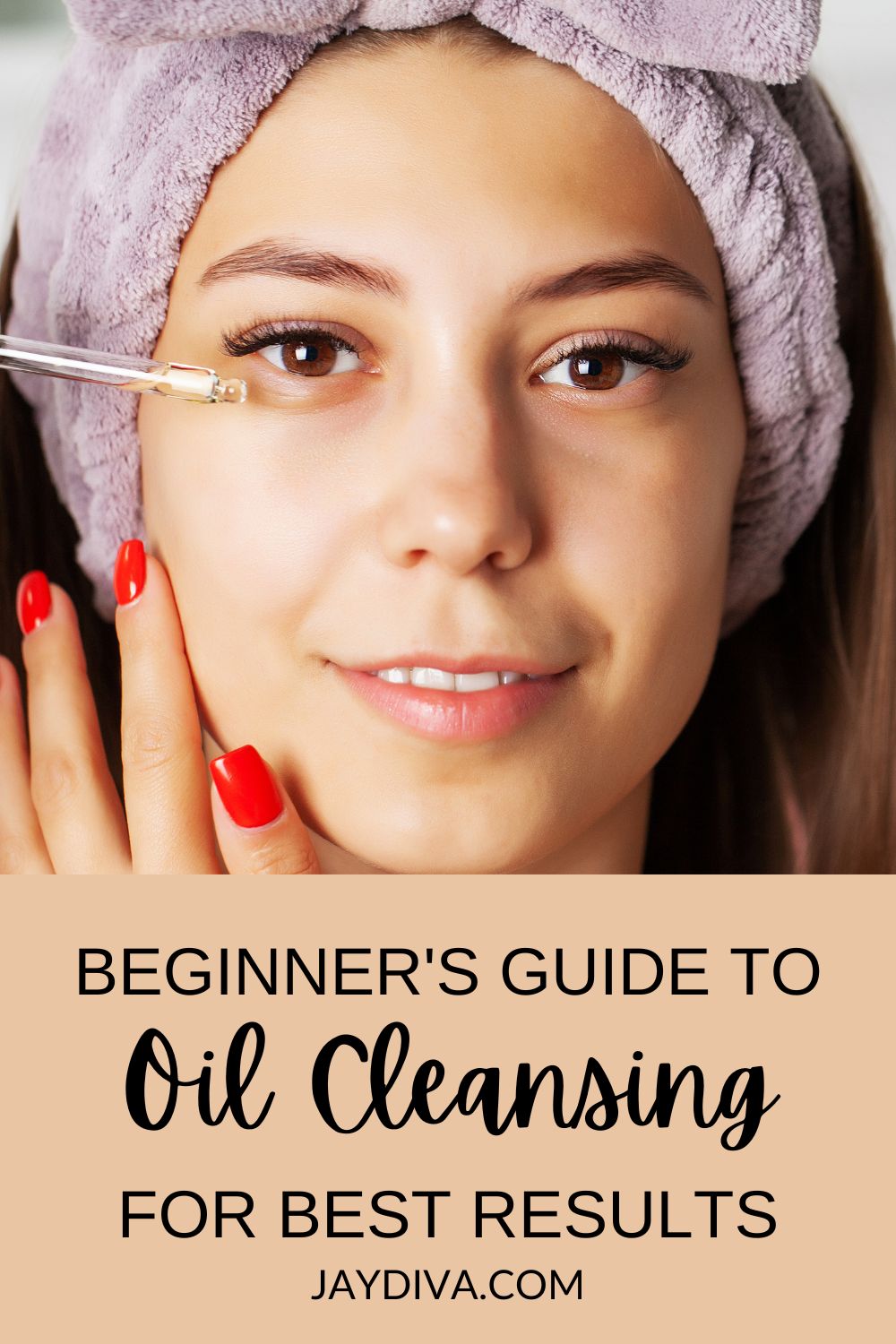
What Are the Best Oils to Oil Cleanse With
Choosing the right oil for oil cleansing is essential to get the most benefits for your skin type. Different oils have different molecular sizes, absorption rates, and fatty acid compositions, making some better suited for certain skin types than others.
Each of these oils offers unique benefits, so you may want to experiment with one or a blend of several to see which works best for your skin’s specific needs. Remember, the purity of the oil matters—always look for high-quality, cold-pressed, unrefined oils to ensure you’re getting the best, most natural product.
Oils for Oily and Acne-Prone Skin
If you have oily or acne-prone skin, choosing lighter, non-comedogenic oils that won’t clog pores is key:
- Rosehip Oil: Known for its healing properties, rosehip oil is rich in vitamins and essential fatty acids. It is non-greasy and absorbs quickly, making it ideal for soothing irritated skin while helping to balance oil levels.
- Grapeseed Oil: This oil is known for its light texture and anti-inflammatory properties. It is high in linoleic acid, which can help balance sebum levels, reducing acne outbreaks.
- Sunflower Oil: Also high in linoleic acid, sunflower oil is lightweight and non-comedogenic, making it excellent for oily skin. It’s also hydrating without feeling greasy.
- Jojoba Oil: While technically a wax, jojoba closely mimics the skin’s natural sebum, helping to regulate oil production. It’s excellent for both oily and acne-prone skin types.
Product Recommendations
- The Ordinary Organic 100% Rosehip oil
- NOW Solutions Grapeseed Oil
- PURA D’OR Organic Sunflower oil
- Cliganic Jojoba Oil
Pin For Later
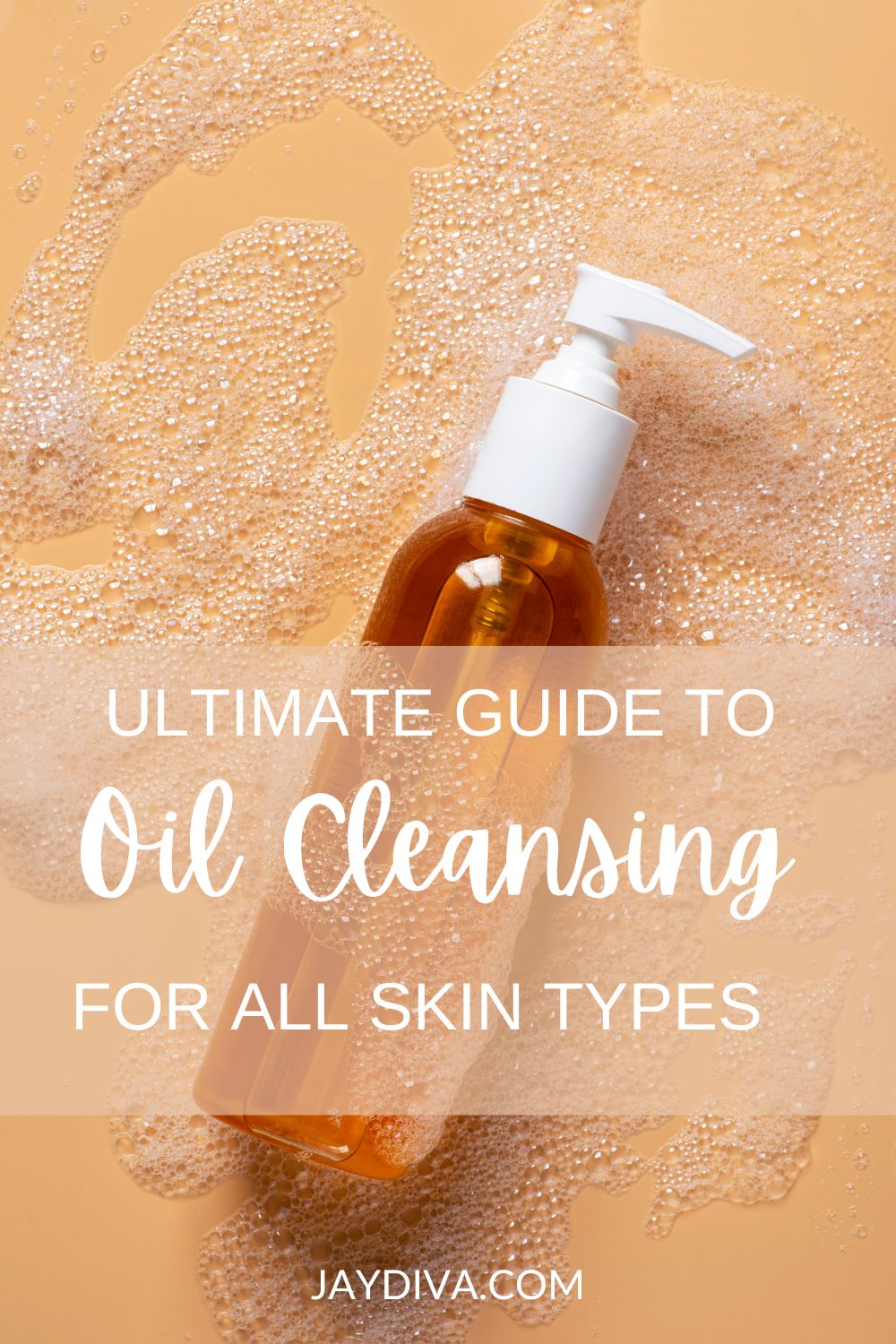
Oils for Dry or Mature Skin
For those with dry or aging skin, richer oils can help provide more intensive hydration and have anti-aging benefits:
- Olive Oil: Packed with antioxidants and healthy fats, olive oil is deeply moisturizing and can help combat the signs of skin aging.
- Avocado Oil: Extremely rich and nourishing, avocado oil contains vitamins A, D, and E, which can penetrate the skin to provide moisture and also support collagen production, enhancing skin’s texture and plumpness.
- Sweet Almond Oil: Sweet almond oil is soothing and hydrating for dry skin. It’s rich in vitamin E, a potent antioxidant that helps protect the skin from oxidative stress and UV radiation damage.
Product Recommendations
Oils for Sensitive Skin
Sensitive skin requires oils that are gentle and less likely to cause irritation:
- Sweet Almond Oil: This oil is very gentle on the skin, which makes it ideal for sensitive types.
- Apricot Kernel Oil: This oil is mild and rich in vitamins A and E, helping to soothe sensitive skin and maintain its moisture balance.
- Argan Oil: Known for its healing and soothing properties, argan oil is packed with vitamin E and essential fatty acids, making it ideal for treating damaged skin and providing moisture without irritation.
Product Recommendations
- Pure Body Naturals Cold Pressed Sweet Almond Oil
- US Organic Apricot Kernel Oil
- Cliganic 100% Pure and Natural Argan Oil
Universal Options
Some oils are very versatile and can be beneficial for almost any skin type:
- Coconut Oil: Although it can be comedogenic for some, coconut oil is antimicrobial and antifungal, and it’s excellent for removing waterproof makeup.
- Hemp Seed Oil: Perfect for most skin types, hemp seed oil won’t clog pores and modulates oil production, making it beneficial for both oily and dry skin types.
Product Recommendations
Pin For Later
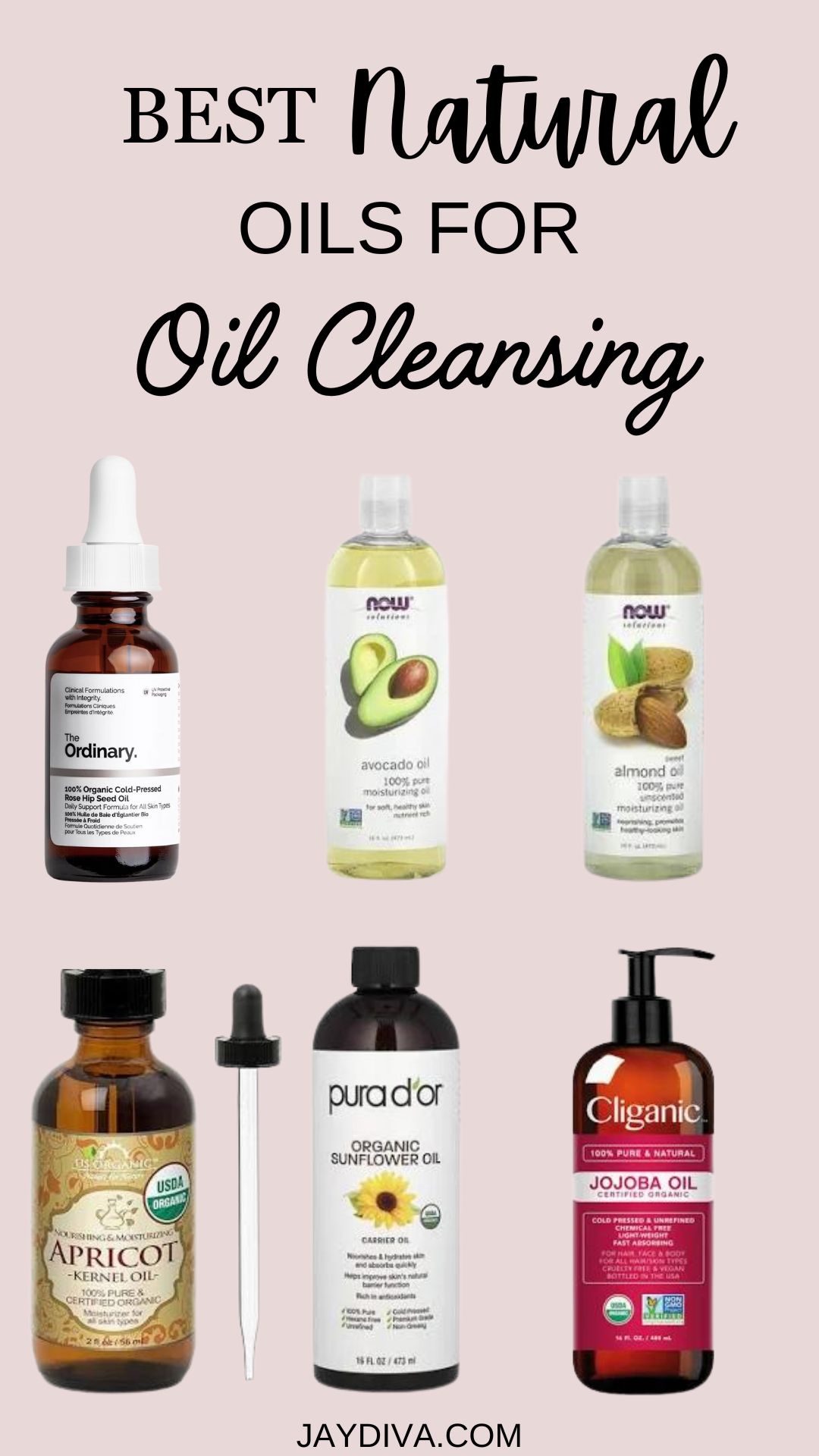
How to Oil Cleanse: A Step-by-Step Guide
Oil cleansing can seem a bit daunting at first, especially if you’re used to foamy, water-based cleansers. However, once you get the hang of it, you might find it to be a soothing and effective part of your skincare routine. Here’s a detailed step-by-step guide to help you get started:
1. Choose the Right Oil for Your Skin Type
Selecting an appropriate oil is crucial. For oily or acne-prone skin, lighter oils like grapeseed or sunflower oil are excellent as they are less likely to clog pores. For dry or mature skin, richer oils like olive or avocado oil can provide more nourishment. Jojoba oil is very close to the skin’s natural sebum, making it a good choice for almost any skin type.
2. Apply Oil to Dry Face with Clean Hands
Ensure your face and hands are dry to start with, as water can hinder the oil’s effectiveness in dissolving impurities. Pour a small amount of oil (usually the size of a quarter) into your palm, then gently rub your hands together to warm it up and spread it evenly on your palms.
3. Gently Massage the Oil into the Skin
With gentle circular motions, massage the oil into your face for about one to two minutes. This not only helps the oil lift dirt and makeup but also stimulates circulation and relaxes facial muscles. Be gentle around sensitive areas like the eyes.
4. Steam Your Face with a Warm, Damp Washcloth
Soak a clean washcloth in warm water, wring out the excess, and place it over your face. This creates a gentle steam that helps open your pores, allowing the oil to work deeper. Leave the washcloth on until it cools to room temperature for about a minute or so.
5. Wipe Off the Oil Gently Without Scrubbing
Use the same washcloth to wipe away the oil gently. No scrub is needed; a soft, gentle wiping motion is enough. You might need to rinse and repeat a couple of times to remove all the oil, especially if you’ve applied makeup.
Also Read: Why you should be double cleansing your oily acne-prone skin.
6. Follow Up with a Skin-Type Appropriate Toner or Moisturizer if Needed
After oil cleansing, it’s a good idea to follow up with a light toner to remove any residual oil and then apply a moisturizer to keep your skin hydrated.
Best Practices for Using Oils in Your Routine
When starting with oil cleansing, consider these tips to make the most of your chosen oil:
- Patch Test: Always perform a patch test with a new oil to ensure your skin reacts well.
- Mix and Match: Don’t be afraid to blend oils to customize a formula that meets your specific skin needs. For instance, mixing grapeseed and a bit of avocado oil can offer both sebum control and hydrating benefits.
- Quality Matters: Opt for cold-pressed, unrefined oils where possible, as these retain more of their natural beneficial properties compared to heavily processed oils.
Pin for later
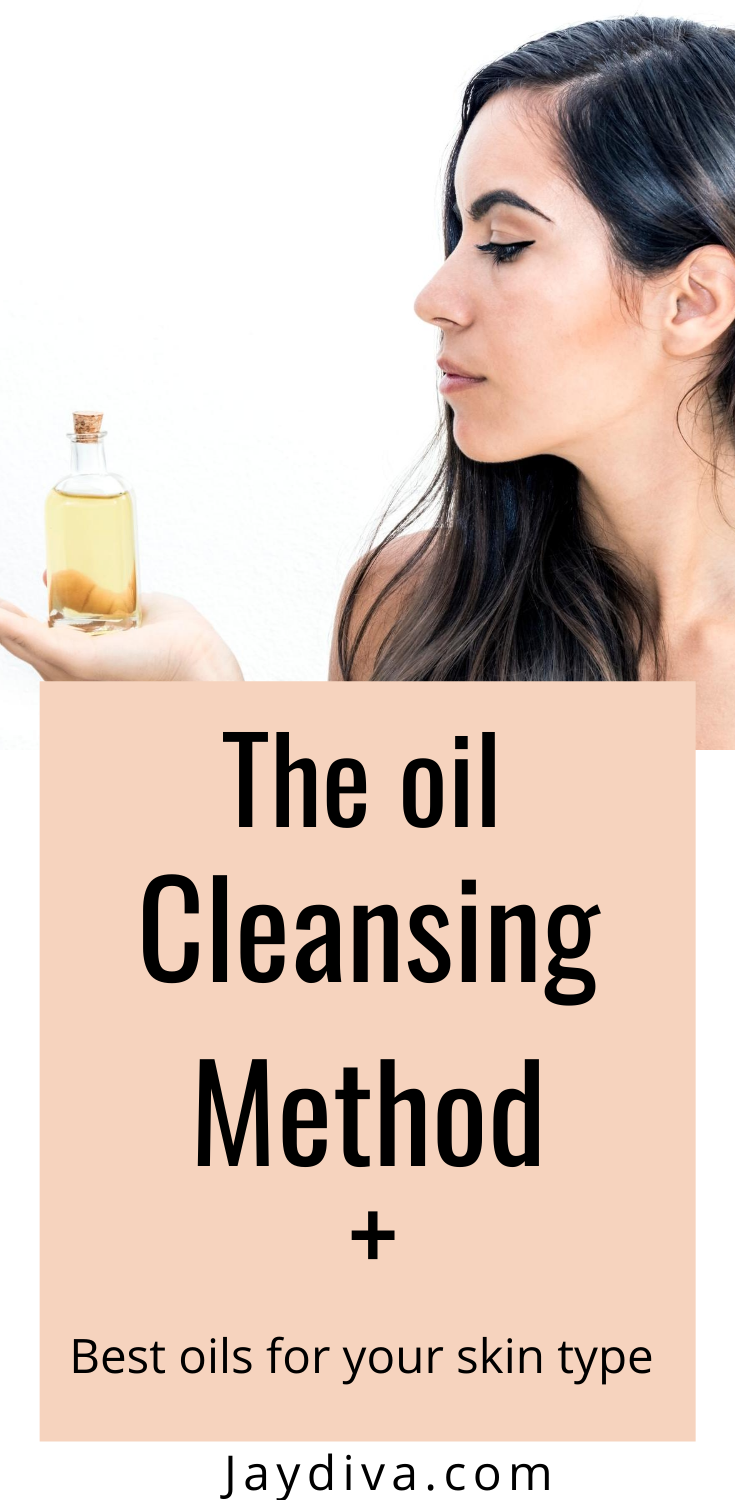
The Wrong Way to Oil Cleanse
Though oil cleansing is a simple and effective method to clean and nourish your skin, it’s easy to make mistakes, especially if you’re new to the process. Understanding these common pitfalls can help you avoid them and ensure you get the most out of your oil-cleansing routine.
1. Using the Wrong Type of Oil
One of the biggest mistakes in oil cleansing is using the wrong type of oil for your skin type. This can lead to various skin issues:
- Oily or Acne-Prone Skin: Using heavy, comedogenic oils like coconut oil might clog pores and exacerbate acne.
- Dry Skin: On the other hand, using oils that are too light, such as grapeseed oil, might not provide enough hydration, leaving the skin still feeling dry and tight.
Always choose oils that align with your skin type and concerns. If you’re unsure, start with a universally safe choice like jojoba oil, which is typically well-tolerated by most skin types.
2. Insufficient Rinsing Leading to Residue
After massaging the oil into your skin, it’s crucial to adequately remove it. Failing to do so can leave a residue that traps dirt and bacteria, potentially leading to breakouts or skin irritation. To effectively remove oil:
- Use a Warm, Damp Washcloth: Gently wipe the oil off with a soft washcloth. This helps to ensure that no oily residue remains, which could attract more dirt to your skin.
- Rinse and Repeat: Sometimes, one pass with a washcloth isn’t enough, especially if you’ve applied makeup. Don’t hesitate to use a clean side of the cloth or a second washcloth if needed.
3. Over-Cleansing That Can Strip the Skin
While oil cleansing is gentler than many traditional methods, overdoing it can still strip your skin of its natural oils, leading to dryness and irritation. To avoid this:
- Don’t Overdo the Frequency: Once a day is generally enough for most skin types. If you have very sensitive or dry skin, you might even want to oil cleanse only a few times a week.
- Keep Massages Brief: A long, vigorous massage might feel relaxing, but doing so too often or too forcefully can irritate the skin and disrupt your skin barrier.
Final Take Home
Oil cleansing offers a unique and effective way to cleanse your skin, balancing natural oil production while removing impurities and makeup gently and efficiently. By choosing the right oil for your skin type and following the correct techniques, you can maximize the benefits of this age-old method, achieving a healthier, more radiant complexion. Remember, the key to success with oil cleansing is consistency and attentiveness to how your skin responds to different oils and methods.

